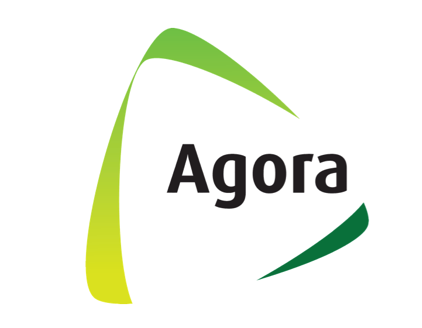Synthèse
from 2020 onwards, the global cut flower market has shown strong momentum, with increased diversification of production towards emerging countries due to favorable weather conditions, aggressive pricing policies and advances in long-distance transport, particularly by sea. The European market, in particular the Netherlands, the United Kingdom and Denmark, remains a major consumer of cut flowers, accounting for around 50% of worldwide consumption. The French market, valued at around 682.72 million euros, reflects the general trend, with the interior decoration segment the dominant consumer of cut flowers, followed by cemetery and funeral plants. Despite a significant import value of 293.1 million euros, mainly from the Netherlands, which acts as a commercial hub, the French market is undergoing an evolution with a growing consumer preference for local "fleurs de France" and the rise of "slow flower" movements encouraging seasonal and local production.
Challenges include the decline of the younger generation of buyers, with the under-35s accounting for just 10% of the amount spent, and the strong seasonality of buying habits. Regulatory support for investment in horticultural greenhouses and the promotion of sustainable, ecologically responsible production are shaping the current market landscape, as are innovations in distribution methods and online sales.
Trends and key figures for the French cut flower market
The French cut flower market is characterized by a complex ecosystem that extends from interior decoration to use in cemeteries and funeral homes. While a significant proportion of the market is destined for interior decoration, consumption for cemeteries and funerals also accounts for a substantial share. The majority of French cut flower imports come from the Netherlands, the redistribution center for flowers produced in Africa and South America.
Houseplants account for between 450 and 500 million euros, while plants for cemeteries and funerals represent around 160 and 25 million euros respectively. Although 92% of the French population buys flowers every year, the budget allocated to cut flowers is showing a downward trend. Average spending on bouquets given as gifts is between 20 and 30 euros, while spending on flowers for personal use drops to between 10 and 20 euros.
Demand is cyclical, with major peaks on key occasions such as Mother's Day (with spending of around 70 million euros), Labor Day (with spending of around27 million euros, mainly on May 1st) and Valentine's Day, which accounts for up to 5% of florists' annual sales, with roses making up 58% of bouquets sold. An emerging trend in the French market is the "slow flower" movement, which encourages local consumption. Despite this trend, French flower production accounts for only 15% of quantities purchased, with a notable decline in producers over the last decade. Looking at the structure of the market, France is home to a large number of flower farms, 40% of which are located in the PACA region. However, in the space of ten years, national cut flower production has been halved, resulting in the region specializing in certain flowers. Regulatory frameworks supporting the cut flower market include investment aid for horticultural greenhouses, facilitated by FranceAgriMer, which offers subsidies ranging from 15% to 20% of eligible costs, with potential additional benefits for young farmers and new entrants.
Key players in the cut flowers market
In the dynamic landscape of the cut flower market, several remarkable players bring color and life to the industry and to our homes. From the wholesalers who form the backbone of the supply chain to the innovative start-ups who are changing the traditional boundaries of flower sales, these companies contribute to the energetic dance of flowers that adorn occasions and environments.
Wholesalers Wholesalers play a crucial role in ensuring a steady supply of fresh cut flowers to the various retailers.
- Agora, with its extensive network, ensures that florists are well supplied with a variety of flowers to meet consumer demand.
- DEXX, ROSEDOR and Trastour offer a wide selection of flowers, facilitating the transition from grower to market. These wholesalers play an essential role in maintaining the cycle of supply and demand, enabling the cut flower industry to continue to prosper.
- Monceau Fleurs: A retail powerhouse: With a strong presence in the retail trade, Monceau Fleurs has secured a place of choice throughout France. Renowned for the diversity of its cut flower assortment, this chain of flower stores caters to customers seeking quality and aesthetic excellence.
Boomingonline platforms The digital age has given rise to e-florists and flower subscription services, which have rapidly gained in popularity.
- Fleurs Fleurs.com is an example of a platform that harnesses the power of the Internet to reach an ever-widening customer base, putting convenience and choice first.
Retail sales
- The Emova Group, a fast-growing leader. The Emova Group is a leader in the flower retail network. Known for its innovation and impressive market presence, Emova Group continues to influence the consumer landscape with its bouquet of brands.
Floral transmission services
- Florajet and Interflora have transformed the way we think about giving flowers. These floral transmission services have made it possible to convey emotions and messages through bouquets, even over long distances, connecting people all over the world.
Startups shaping the future of flowers Startups are breathing new life into the market with innovative business models and sustainable practices.
- Watercolour stands out for its creative approach to floral arrangements,
- Flora Nova innovates with technological investments that simplify the buying process for consumers.
In conclusion, from traditional wholesalers to innovative disruptors, the cut flower market thrives thanks to the diverse and dynamic nature of these key players. Each contributes to the sector in its own unique way,
à la compréhension de ce marché
Détail du contenu
 Informations
Informations
- Nombre de pages : 30 pages
- Format : Version digitale et PDF
- Dernière mise à jour : 15/02/2024
 Sommaire et extraits
Sommaire et extraits
1 Market overview
1.1 Introduction and definition of the flower market
The cut flower market is made up of several players, including growers, wholesalers and specialty stores. Most bouquets of cut flowers, picked up or given as gifts, keep for about a week, although some varieties can be kept for up to 15 days. Cut flowers are most often used for interior decoration, as ornaments at funerals and in cemeteries .
The European market for flowers and ornamental plants accounts for a large proportion of worldwide consumption. The Netherlands, the United Kingdom and Denmark are the biggest consumers, relative to the number of inhabitants. In the floriculture market, the cut flower segment is predominant, followed by the live plant segment.
Emerging countries are playing an increasingly important role in cut flower production, thanks to favourable climatic conditions, aggressive pricing policies and progress in terms of transport (particularly by sea). Moreover, the geographical expansion of production and the development of logistics solutions, particularly long-distance transport capacities, are the main factors driving the cut flower market.
The majority of French cut flower imports come from the Netherlands, even though they may have been produced in another country (Africa, South America). Only 8% of flowers purchased in France come from local growers.
The French market is stimulated by the development of new online distribution methods, such as subscriptions, "boxes" or "clicks & collect" mechanisms where, once the bouquet has been ordered online, the customer can then collect it in-store.
Last but not least, the French market can draw on the growing sensitivity of some consumers to the consumption of local products, and in this case cut flowers produced in France. Indeed, the "Fleurs de France" label has been set up to promote "made in France", the use of short circuits and seasonal production. However, many consumers, faced with the price argument, will prefer to buy imported foreign produce at a much lower cost.
1.2 Global market growth
The global cut flowers market stood at $**.* billion in ****, and is expected to grow at a strong pace over the next few years: the market is expected to grow at a CAGR of +*.*% over the period ****-****, reaching over $**.* billion in ****.
Flower market value World, ****-****, in billions of dollars CAGR: ...
1.3 The French flower market
Key figures for the national market
Figures on the size of the flower market itself are not abundant. Nevertheless, the site toutelafranchise informs us that in ****, its level was estimated at around * billion euros, down *% on ****. Given the trends in the plant market, we can imagine that the flower market recorded ...
1.4 Foreign trade in flowers
In order to establish the level of France's foreign trade in flowers, we used the UN Comtrade website under the heading "cut flowers, flowers and flower buds of species used for bouquets or ornaments, dried, dead, blanched, impregnated or otherwise prepared".es, flowers and flower buds of species used for bouquets ...
2 Demand analysis
2.1 Flower consumption patterns in France
In ****, **% of French households bought plants, i.e. ** million households. That's ***,*** fewer than in ****. In terms of individuals, **.* million French people over the age of ** bought plants, i.e. **% of the total population. [***]
evolution of the average quantity of plants purchased per household France, ****-****, in units Source: ****
The graph above ...
2.2 Consumer profile
Plant buyers by gender France, ****, % of total Source: ****
The graph above informs us that **% of indoor plant buyers in France in **** were women. In addition, the graph below shows that a majority of plant buyers are over ** (***).
Breakdown of plant buyers by age France, ****, in Source: ****
The graph below shows the ...
2.3 Seasonality of demand
The graph below shows the proportion of searches for a given keyword in a given region and for a specific period, compared with the time when the keyword's usage rate was highest (***).Thus, a value of ** means that the keyword was used less often in the region concerned, and a value ...
2.4 What the French think of different florist brands
What the French think of different florist chains France, ****, in Source: ****
NB: the Interflora and Aquarelle brands only offer their arrangements online; the others have physical outlets.
The graph reveals one particular feature of the French public's view of florists: with the exception of Interflora, most survey respondents are unaware of ...
3 Market structure
3.1 Production and key industry players
A fragmented value chain
The value chain in the cut flower market is highly complex and variable. It may involve a consumer buying directly from a local producer, although this is very rare, or a fragmented chain involving different countries. The example below looks at the distribution of the final price ...
3.2 Market distribution channels
The main players in the sector
There are many different players in the French flower market. The main ones include
Florists (***) E-florists (***) Remote flower and plant ordering services (***) Specialized garden centers (***) Agricultural cooperatives, self-service on the farm (***) Mail order (***) Hypermarkets, supermarkets and mini-markets, as well as hypermarket garden centers (***) DIY and ...
3.3 Financial situation of companies in the sector
Economic and financial situation of horticultural companies France, ****, in Source: ****
The graph above shows that over a quarter of horticultural companies are in a fragile economic and financial situation. This high proportion may be explained by the impact of the health crisis on companies in the sector. In addition to the ...
3.4 Focus on florists
A report by the French Federation of Florist Craftsmen (***) in **** provides information on the characteristics of the sector. Even if florists are not the only players in the flower market, they remain a benchmark that can give us an idea of the forces at work in the market.
For example, the ...
4 Offer analysis
4.1 Sales prices and purchase costs
As the price of flowers is not fixed by regulations, many criteria are taken into account: the size of the bouquet, the type of flowers, the sophistication of the bouquet: the size of the bouquet, the type of flowers, the sophistication of the bouquet... Prices can also vary according to geographical ...
4.2 Price trends
change in the consumer price index for plants and flowers France, ****-****, index base *** in **** Source: ****
The graph above clearly shows a steady rise in prices for the consumption of plants and flowers. The last four years have all seen sharp price rises. Inflation exacerbated in ****, with prices gaining almost six ...
4.3 Focus on delivery and online shopping
Internet purchases and deliveries, a factor affecting the flower market in general
Flower delivery is on a roll. A study by Aquarelle, a pure player in online flower sales, relayed by LSA Conso, informs us that **% of French people have already bought flowers online, with this proportion rising to **% in the ...
4.4 The Fleurs de France label
As mentioned above, this trend is promoting a return to local consumption, favoring French or even regional production over imported flowers (***). However, supply is struggling to meet this new demand, with French flower production now accounting for only**% of quantities purchasedwell behind the Netherlands. According to FranceAgrimer, the number of growers ...
4.5 Other market trends
A return to the colors of the **s
Although some florists have already adopted this trend in ****, its success is set to continue in the years to come. This trend is inspired by the iconic colors of the ****s, when stylists and designers drew inspiration from the "Flower Power" decade. This ...
5 Regulations
5.1 Support for horticultural activities and European regulations
The florist profession
Marketing plants and flowers requires specialized technical, commercial and administrative training. The florist's CAP is complemented by further training, such as the Brevet de Maîtrise. A florist needs a broad knowledge of horticulture, plant design, sales and marketing. In networks, franchisors offer in-depth training to their franchisees. ...
5.2 World Customs Nomenclature and Harmonized System
Chapter ** of the "Live plants and floricultural products" customs nomenclature provides data on plants, including chicory seedlings, plants and roots, cuttings and vines, pineapple seedlings, mushroom spawn, vegetable or strawberry plants, trees, shrubs, edible fruit bushes, seedlings and planting material.e, vine cuttings and seedlings, pineapple seedlings, mushroom spawn, vegetable and ...
6 Positioning the players
6.1 Segmentation
- Agora
- DEXX
- ROSEDOR
- France Fleurs
- Emova Groupe - Monceau Fleur
- Florajet
- Interflora France
- Aquarelle Fleurs
- L'agitateur floral
- Fleurs ô Naturel
- Greenyard
- Renaud Distribution Horticash
- Hectar
- Ernest Turc
- Clayrton's
 Liste des graphiques
Liste des graphiques
- Valeur du marché des fleurs
- Répartition de la superficie en fleurs et en plantes ornementales dans l'UE des 27
- Répartition de la valeur de la production de fleurs
- Cinq plus grands exportateurs de fleurs coupées
- La valeur des dépenses en végétaux
Toutes nos études sont disponible en ligne et en PDF
Nous vous proposons de consulter un exemple de notre travail d'étude sur un autre marché !
Dernières actualités
Entreprises citées dans cette étude
Cette étude contient un panorama complet des entreprises du marché avec les derniers chiffres et actualités de chaque entreprise :
 Choisir cette étude c'est :
Choisir cette étude c'est :
Accéder à plus de 35 heures de travail
Nos études sont le résultat de plus de 35 heures de recherches et d'analyses. Utiliser nos études vous permet de consacrer plus de temps et de valeur ajoutée à vos projets.
Profiter de 6 années d'expérience et de plus de 1500 études sectorielles déjà produites
Notre expertise nous permet de produire des études complètes dans tous les secteurs, y compris des marchés de niche ou naissants.
Notre savoir-faire et notre méthodologie nous permet de produire des études avec un rapport qualité-prix unique
Accéder à plusieurs milliers d'articles et données payantes
Businesscoot a accès à l'ensemble de la presse économique payante ainsi qu'à des bases de données exclusives pour réaliser ses études de marché (+ 30 000 articles et sources privées).
Afin d'enrichir nos études, nos analystes utilisent également des indicateurs web (semrush, trends…) pour identifier les tendances sur un marché et les stratégies des entreprises. (Consulter nos sources payantes)
Un accompagnement garanti après votre achat
Une équipe dédiée au service après-vente, pour vous garantir un niveau de satisfaction élevé. (+33) 9 70 46 55 00
Un format digital pensé pour nos utilisateurs
Vous accédez à un PDF mais aussi à une version digitale pensée pour nos clients. Cette version vous permet d’accéder aux sources, aux données au format Excel et aux graphiques. Le contenu de l'étude peut ainsi être facilement récupéré et adapté pour vos supports.
 Nos offres :
Nos offres :
The Flowers and Florists Market | France
- Quels sont les chiffres sur la taille et la croissance du marché ?
- Quels leviers tirent la croissance du marché et leur évolution ?
- Quel est le positionnement des entreprises sur la chaine de valeur ?
- Comment se différencient les entreprises du marché ?
- Données issues de plusieurs dizaines de bases de données
Pack 5 études (-15%) France
- 5 études au prix de 75,6€HT par étude à choisir parmi nos 800 titres sur le catalogue France pendant 12 mois
- Conservez -15% sur les études supplémentaires achetées
- Choisissez le remboursement des crédits non consommés au terme des 12 mois (durée du pack)
Consultez les conditions du pack et de remboursement des crédits non consommés.
- 08/03/2024 - Ajout des informations de l'entreprise Clayrton's
- 08/03/2024 - Ajout des informations de l'entreprise Ernest Turc
- 01/03/2024 - Mise à jour des données financières de l'entreprise L'agitateur floral
- 01/03/2024 - Mise à jour des données financières de l'entreprise Aquarelle Fleurs
- 01/03/2024 - Mise à jour des données financières de l'entreprise Interflora France
- 01/03/2024 - Mise à jour des données financières de l'entreprise Florajet
- 01/03/2024 - Mise à jour des données financières de l'entreprise ROSEDOR
- 01/03/2024 - Mise à jour des données financières de l'entreprise France Fleurs
- 01/03/2024 - Mise à jour des données financières de l'entreprise Emova Groupe - Monceau Fleur
- 23/01/2024 - Ajout des informations de l'entreprise Hectar
- 21/11/2023 - Ajout des informations de l'entreprise Renaud Distribution Horticash
- 04/11/2023 - Mise à jour des données financières de l'entreprise L'agitateur floral
- 04/11/2023 - Mise à jour des données financières de l'entreprise Aquarelle Fleurs
- 04/11/2023 - Mise à jour des données financières de l'entreprise Interflora France
- 04/11/2023 - Mise à jour des données financières de l'entreprise Florajet
- 04/11/2023 - Mise à jour des données financières de l'entreprise Emova Groupe - Monceau Fleur
- 04/11/2023 - Mise à jour des données financières de l'entreprise France Fleurs
- 04/11/2023 - Mise à jour des données financières de l'entreprise ROSEDOR
- 03/08/2023 - Mise à jour des données financières de l'entreprise L'agitateur floral
- 03/08/2023 - Mise à jour des données financières de l'entreprise Aquarelle Fleurs
- 03/08/2023 - Mise à jour des données financières de l'entreprise Interflora France
- 03/08/2023 - Mise à jour des données financières de l'entreprise Florajet
- 03/08/2023 - Mise à jour des données financières de l'entreprise Emova Groupe - Monceau Fleur
- 03/08/2023 - Mise à jour des données financières de l'entreprise France Fleurs
- 28/07/2023 - Mise à jour des données financières de l'entreprise ROSEDOR
- 23/06/2023 - Ajout des informations de l'entreprise Greenyard
- 02/05/2023 - Mise à jour des données financières de l'entreprise L'agitateur floral
- 16/04/2023 - Mise à jour des données financières de l'entreprise Aquarelle Fleurs
- 16/04/2023 - Mise à jour des données financières de l'entreprise Interflora France
- 16/04/2023 - Mise à jour des données financières de l'entreprise Florajet
- 16/04/2023 - Mise à jour des données financières de l'entreprise Emova Groupe - Monceau Fleur
- 16/04/2023 - Mise à jour des données financières de l'entreprise France Fleurs
- 16/04/2023 - Mise à jour des données financières de l'entreprise ROSEDOR
- 05/04/2023 - Ajout des informations de l'entreprise Fleurs ô Naturel
- 09/02/2023 - L'étude a été complètement mise à jour par un analyste Businesscoot. En plus de cette revue complète, des informations sur les différents grossistes, le nombre de magasins et enseignes, la répartition du prix de vente entre les acteurs du secteur ont été ajoutées. La saisonnalité de la demande a aussi été développé.





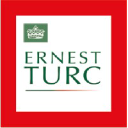 Ernest Turc relance la production de narcisses en Bretagne - 08/03/2024
Ernest Turc relance la production de narcisses en Bretagne - 08/03/2024
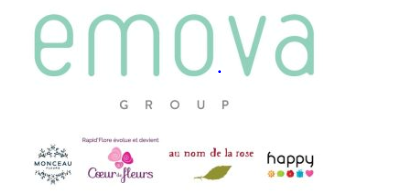 Saint-Valentin : le marché des fleurs coupées face aux défis environnementaux - 14/02/2024
Saint-Valentin : le marché des fleurs coupées face aux défis environnementaux - 14/02/2024
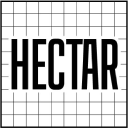 Yvelines : le campus agricole Hectar lance sa formation sur la floriculture - 23/01/2024
Yvelines : le campus agricole Hectar lance sa formation sur la floriculture - 23/01/2024
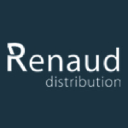 Accessoires pour fleuristes : Horticash est repris par Renaud Distribution - 21/11/2023
Accessoires pour fleuristes : Horticash est repris par Renaud Distribution - 21/11/2023
 Greenyard renforce sa position sur le marché malgré la baisse de consommation en fruits et légumes - 16/06/2023
Greenyard renforce sa position sur le marché malgré la baisse de consommation en fruits et légumes - 16/06/2023
